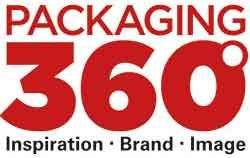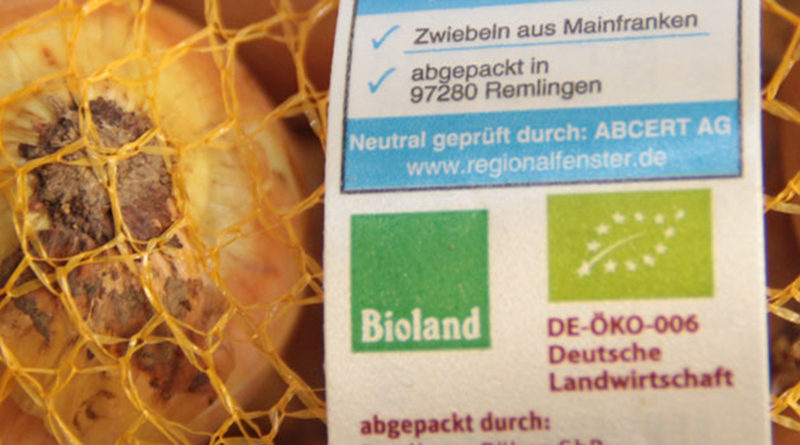Regionality: Packaging with Targeted Customer Address
Environmental protection and quality, but especially the support of the regional economy are reasons why consumers choose regional products. But what is labelled as regional is not always regional. Distinct packaging can help.
Regionality plays an important role in food, as it stands for tradition, safe origin and quality. Buying regional foods gives you a good feeling – after all, you are supporting the companies in the neighbourhood, CO2 emissions are lower, you trust the origin and freshness (see chart).
Numerous studies and surveys in recent years have shown that the origin of food is a decisive factor for many consumers – according to the nutrition report of the Federal Ministry of Food and Agriculture, for example, 78 percent of them attach importance to the fact that their groceries come from the region. And according to the Consors Finanz Consumer Barometer 2019, 92 percent of Germans and even 93 percent of Austrians value regional products highly – for quality and environmental reasons. Anja Wenk, Head of Retail Financial Solutions at Consors Finanz, sees a change in basic attitude here: “More and more consumers seem to be questioning their purchasing behaviour and are realizing that quality and responsible consumption cannot be had at cheap prices.”
What does regional mean?
In view of the climate debate, the demand for more regionality is likely to increase even further – and even more so in view of the current corona crisis. Many consumers are only now beginning to understand where all the food, which is readily available in supermarkets, comes from. But often this is not made easy for them either. For example, there is still a lack of clarity about what “regional” actually means. After all, packaging information such as “from the region,” “fresh from here” or similar statements are in no way meaningful or even legally defined – the product could come from almost anywhere. Only when further information is added to the packaging, for example in the form of seals or clear manufacturer information, can customers trust the designation “regional”.
In the case of eggs, this is easiest to understand thanks to egg stamps, if you know the code for your federal state. In the case of fruit, vegetables, beef and fish, the country of origin must be stated – but “Germany” is by no means a true regional designation. Anyone who advertises with regionalism should then also communicate the place of origin or at least a designation such as “from Rheinhessen” or “from the Weser Hills” on the packaging, not least in order to increase their own credibility.
Another possibility for packaging labelling is the nationwide “regional window”, with which regional products can be labelled on a voluntary basis. It provides information on the region of origin, the processing location, the proportion of regional ingredients and the respective inspection body. If such a product is found locally, however, this does not mean that it is really regional, as it may be marketed throughout Germany or, for example, only just over half of it must consist of regional ingredients – the customer not only has to see the label, but also really read it.
Other labels are awarded by regional initiatives that market their products jointly. Here, however, each label has its own criteria, and their large number alone makes it difficult for consumers to find their way around them. Basic criteria that apply to all regional labels are already being planned.
Building trust with authentic packaging
When marketing regional products, it is important not to underestimate the importance of taking another close look at existing packaging and optimising it with regard to the claim of regionality – and to take a few things into account when developing new products. Potential stamps must not be lost in the masses, and the place or region of origin should be clearly communicated. Inverto, a purchasing specialist belonging to the Boston Consulting Group, has researched why consumers choose regional products (see chart) – and these findings can also be incorporated into packaging design by providing further information, for example on particularly short distances, the farmer from whom the raw materials come, or the company’s sustainable initiatives. Inverto itself recommends, among other things, choosing an authentic appearance for regional products; for example, individual packaging and labelling should ideally be provided by the local supplier.
Regionality is a trend that is also characterised by the fact that it is bringing more influx to the weekly markets, among other things. In most cases, packaging is no longer required here. But regional foods generate the largest turnover in the food retail trade anyway. Here the “packaging” is the market women and men from whom customers expect information and whom they want to trust. And this is also where the opportunity lies: the more regional you really are, the more you should communicate this – through appropriate information on the packaging, but also at the POS.
An analysis by market researcher YouGov on the topic of regionality in food also speaks for itself: “Especially for products such as fruit and vegetables, it is worthwhile for supermarkets and discounters to address those who prefer to buy regional foods, as this target group has a high monthly spending volume, especially in this product category,” says Daniela Loeck, Senior Consultant at YouGov, with regard to advertisements for regional foods. And she makes another important point: “Manufacturers should, however, bear in mind that this target group particularly likes to buy their food in local specialty stores such as bakeries, butchers or greengrocers as well as at the market. Therefore, a targeted approach is particularly important.”
This recommendation should apply not only to advertisements and other promotional activities, but also to communication on the packaging – ideally in close consultation with the local retailer. But be careful with fake regionality: If a product is considered regional, it also needs to be. Otherwise, customers lose what in times like these can hardly be measured in gold: trust.




